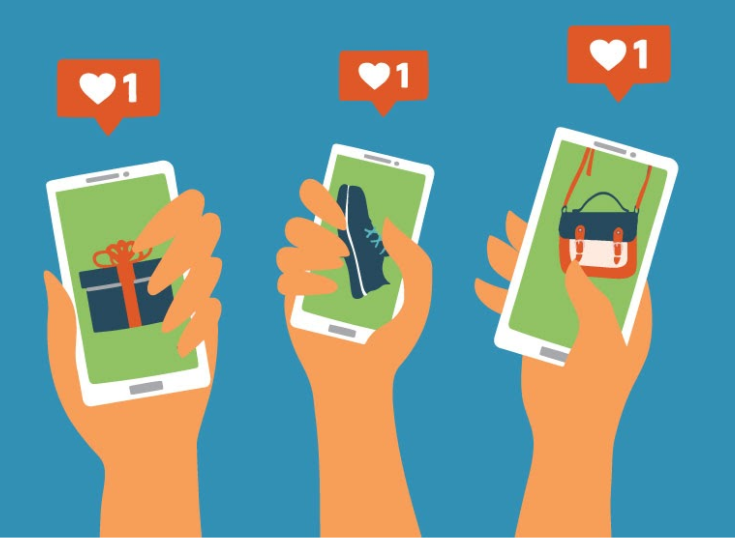The Power of Utilizing Social Influencers for Your Brand
March 18th, 2020 by
What’s the Hype with Influencer Marketing?
We are in the era of social media marketing being at the forefront of increasing brand revenue. I’m not talking about advertising on social media platforms in the traditional way. I am talking about teaming up with social media influencers or as many others may call them, bloggers.
Influencers are proving to be one of the most trusted resources when it comes to consumer purchases. Consumers connect with influencers on a personal level and look to them for advice and insight on products and services. Each influencer has their own niche in which they thrive: cosmetics, clothing, home decor, health & fitness, parenting, traveling, food & booze, or even the best local spots in the area. They do their due diligence in growing their following and building trust, which is the true means to influencer success.
Influencers are the way of the future, and it’s in your brand’s best interest to begin looking into this marketing method. Influencer marketing is just getting started, and according to Google Trends, the topic has grown tremendously since 2013 with no end in sight!
Marketers around the world spent more than $5 billion on Influencer marketing on Instagram in 2018, helping to grow the influencer marketing industry’s success. It’s estimated that influencer marketing will grow to $10 billion by 2020.
eBay reported that they had 1.3 million engagements (hashtags, reposts) per year, while American Express reported 3.7 million engagements per year, and Daniel Wellington had a record-breaking 1 million+ engagements per year—all thanks to Influencer marketing.
Are you starting to believe the hype now?
Finding Your Brand’s Match
Finding your brand’s perfect match can be tricky. That is why I have compiled a list of questions to begin your quest.
- What is it that you want the influencer to help you with?
- What is your budget for influencer marketing? Do you want to team up with more than 1 influencer?
- Will there be a contract involved? If so, is the contract flexible to work with the influencer’s rates?
- Is the influencer aligned with your brand?
- Will your campaign content look natural?
- Does the influencer speak to your brand’s niche frequently?
- Is there alignment with your industry and brand values?
- Does the influencer have the reach to accomplish your goals?
- Is the influencer capable of engaging your target audience?
- Are they on the social media channels your audience frequents?
- Is the influencer relevant?
- Is their fan base similar to the buyer personas you’ve built for your company?
Now that the quest has begun, it’s time to determine which type of influencer is the best fit for your brand. You may be asking, “There are types of Influencers?” The answer to that is YES! Not all influencers are the same or can provide you with the return that you’re looking for.
Review this list of a few types of influencers and the pros and cons for each below.
- Brand advocates: Brand advocates are influencers who currently do not have a contract with a brand but pass on positive information about the brand or product to their followers. Brand advocates are a great example of a cost-effective partnership. The reason for this is that many brand advocate influencers would highly consider a trade for product instead of a paycheck for promoting your brand.
- Micro-Influencers: Micro-influencers are a category of content creators with highly engaged social audiences that range in size of 100 to 5,000 followers. They can be beauty enthusiasts, solo travelers, mommy bloggers, fashionistas, or foodies—they represent any passion with an audience. Micro-influencers usually achieve around 8 percent of active engagement per post, while premium social influencers come in around 4 percent.
- Macro-Influencers: These influencers have a very large following, usually between 100,000 and 1 million followers. Macro-influencers offer a blend of reach and impression, but they cannot match the engagement rates of micro-influencers.
How to Measure Success
There are a couple of really important metrics that you are going to want your influencer to report on during the campaign. The metrics that really matter are: clicks, likes, shares, reactions, comments, brand mentions, impressions, and purchases. You can keep track of these metrics by creating custom promotional codes, using SmartURL tracking links like Bit.ly, creating custom hashtags, and of course using Google Analytics to track users’ referral sources.
An easy way to measure the success of influencer campaigns is to track the amount of engagement your influencers’ content receives. This is why it is important to ask your influencer to report on clicks, lives, shares, comments, and impressions per post, story, or blog post. Engagement is a better indicator of success, since we can assume that content that receives the most engagement is more compelling and makes an effective connection with your target audience. With higher engagement comes higher visibility for your brand.
This all ties back to micro and macro-influencers. In many instances, the macro-influencers will have a widespread reach, while the micro-influencer will have better quality engagement.
Looking at the trends for 2020 Influencer Marketing
Now that you believe the hype, what does 2020 look like for social media influencers? According to Google, there has been a 1500% increase in consumer’s searching for “Influencer Marketing.” There is a huge takeover happening within the micro-influencer community! That’s right, those micro-influencers are taking over the Influencing world. According to Social Media Today, “61% of consumers say that micro-influencers produce the most relatable content!” Where can you find these micro-influencers? The biggest platforms in 2020 are Instagram, Twitter, and the influencer’s personal blogs.
Ready to revamp your brand’s social media marketing strategy but don’t know where to start? Team up with Search Influence to learn what metrics matter for your marketing plan. Contact us to get started today.


